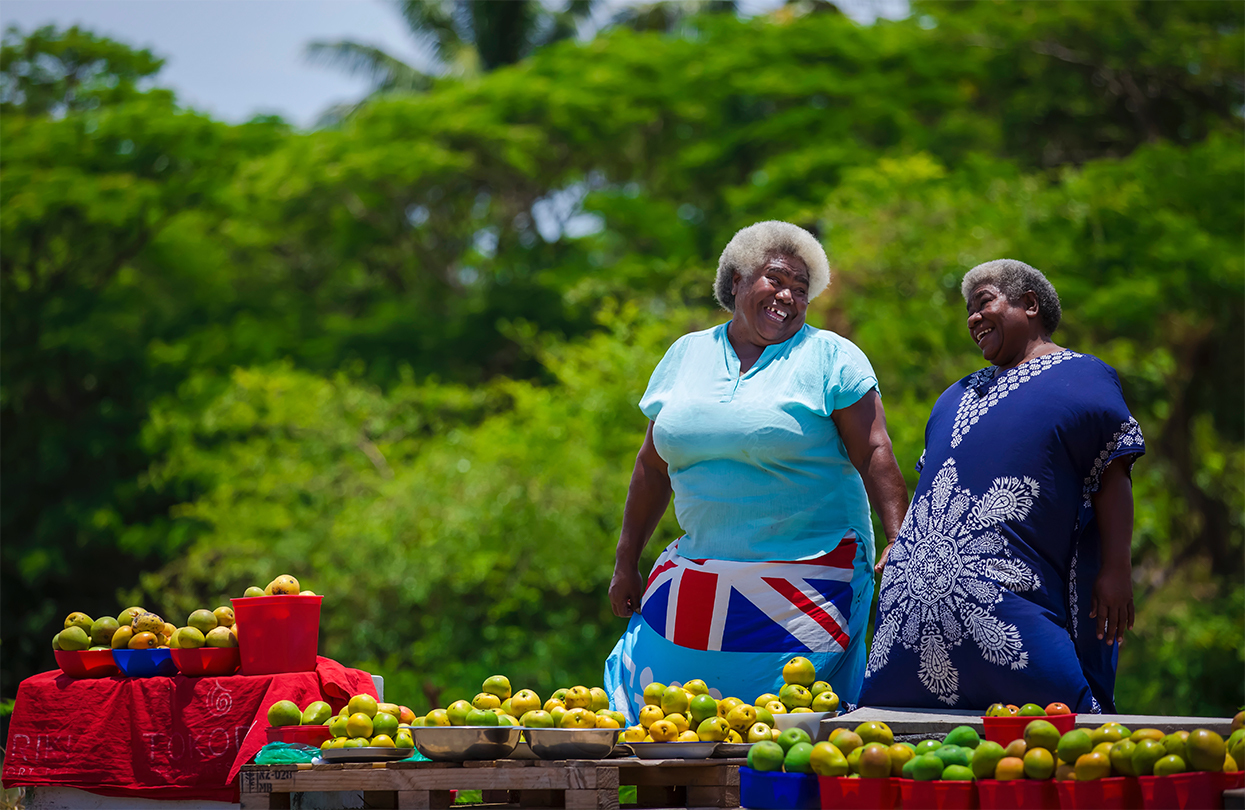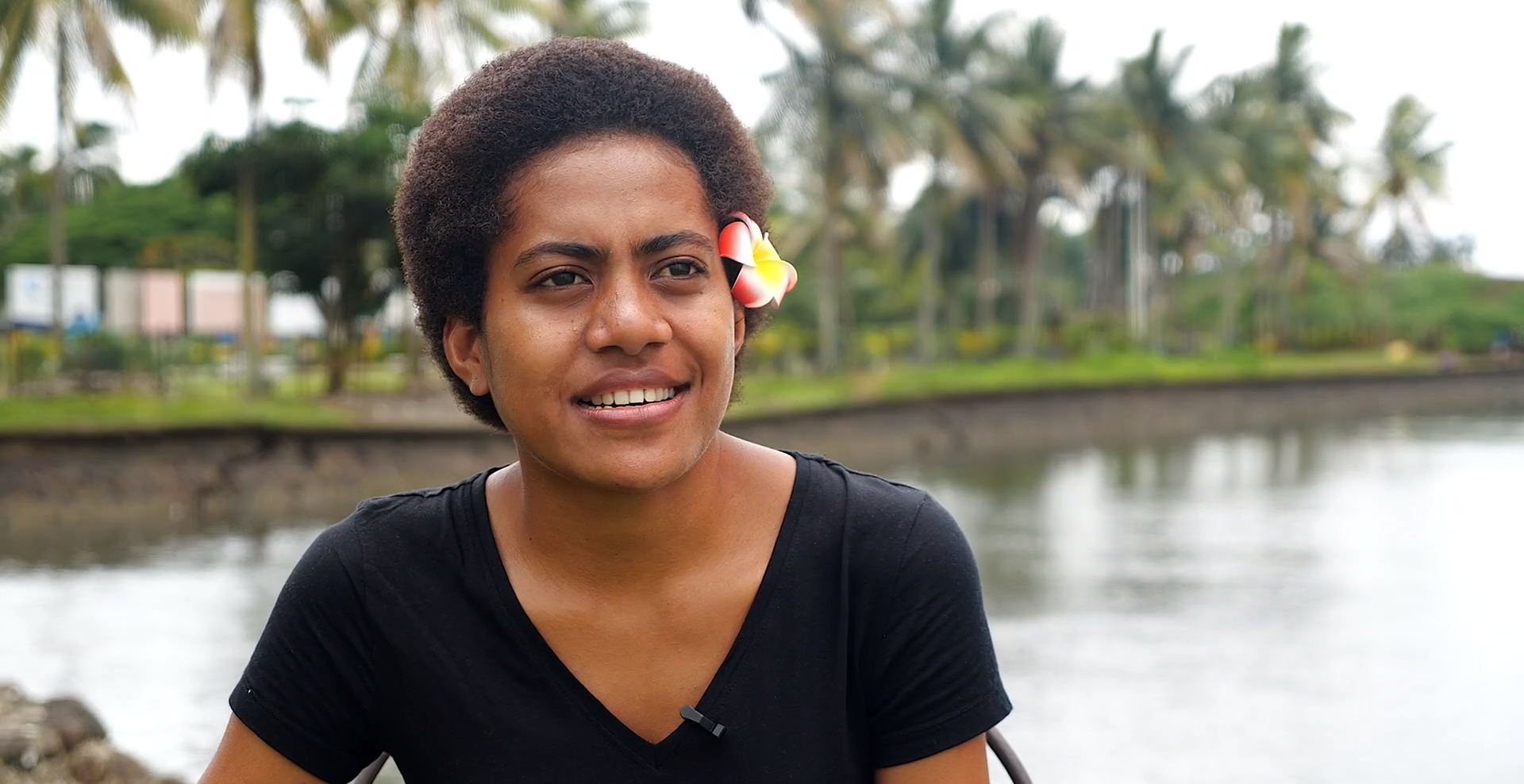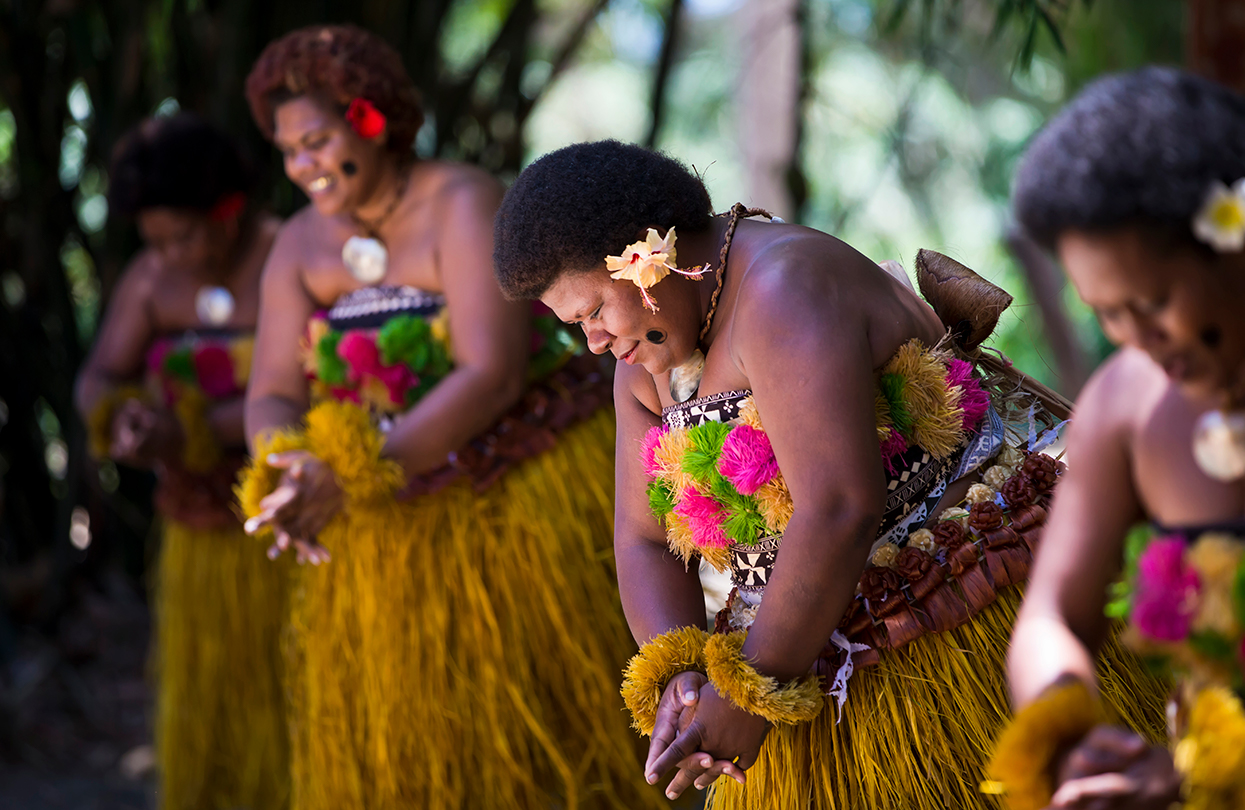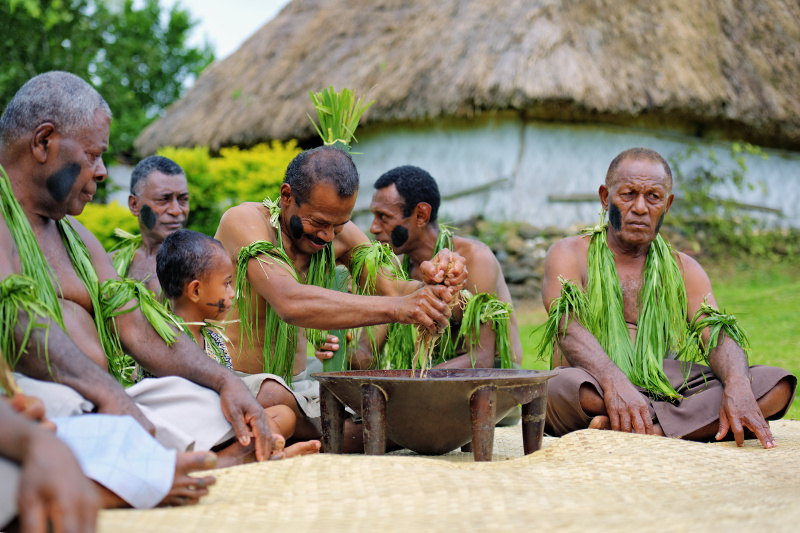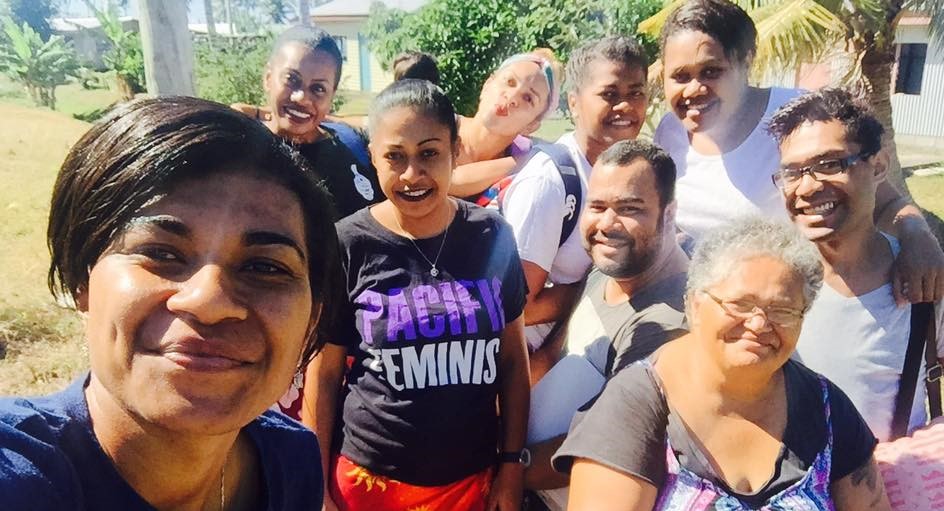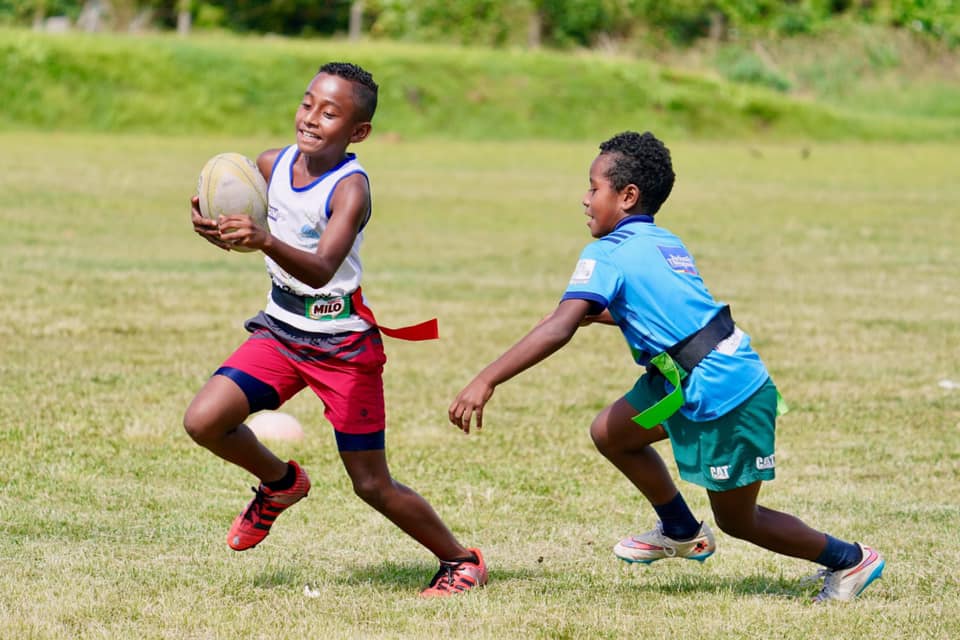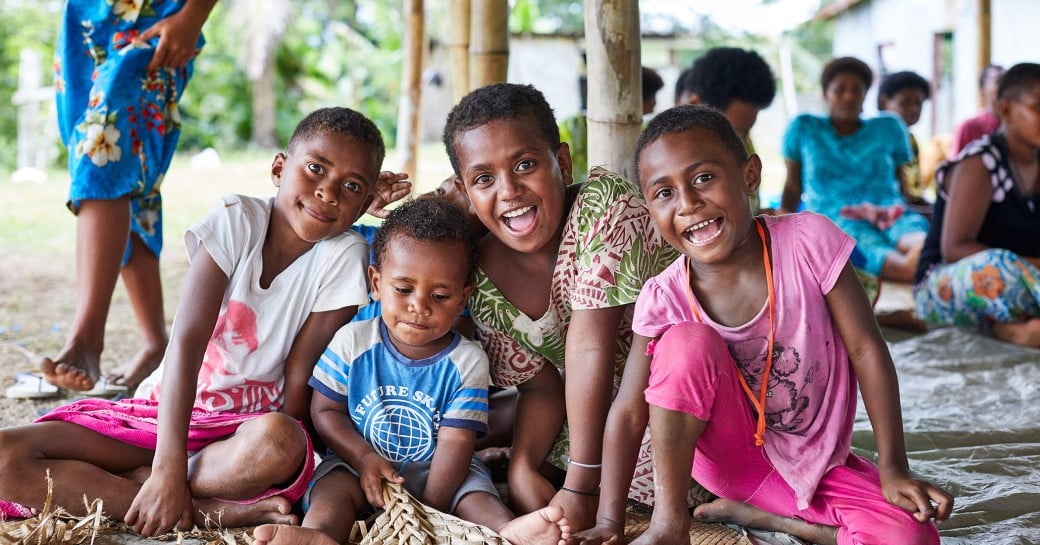Global Health
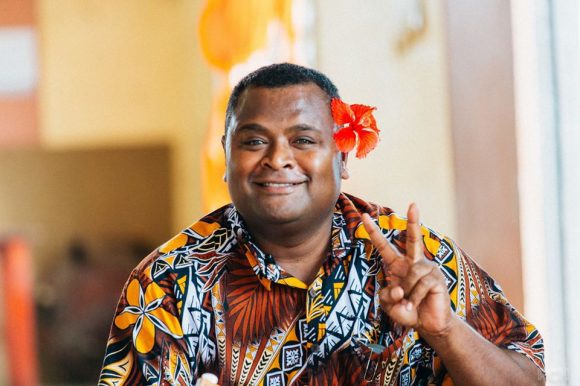
- Module 1: An introduction to Health in Fiji
- The State of Health in Fiji, SDG’s, Fiji Development Plan, Government & Non Government Health Structures in Fiji, The History of the Healthy Islands, and Towards a Healthy Fiji (TAHF) Programmes, Frameworks for Implementation
- Module 2: The Fijian Context
- Current Status & Emerging Themes, The Health Promoting Schools Programme
- Module 3: Barriers for Health Promotion & Disease Prevention in Fiji
- Health Risk Factors, Socio-Economic Risk Factors, Education Risk Factors, Disability Risk Factors
- Module 4: The NCD Crisis in Fiji & The Pacific
- Background, Risk Factors & NCD Data, Fiji MOHMS NCD Strategic Plan 2015-2019
- Module 5: Health in the Community
- The Community Health Worker, Community Health Promotion Programmes, Role of Traditional Medicine, Faith & Traditional Healers
- Module 6: The Way Forward
- Global Health Trends, Fiji Ministry of Health & Medical Services Strategic Plan 2020-25, Lifestyle Medicine, Mental Health in Fiji
- Test your Knowledge!
Module 1: An Introduction to Health in Fiji

When defining ‘Health Promotion’. the World Health Organisation states that it is the ‘process of enabling people to increase control over, and to improve, their health’. It highlights the importance of moving beyond a focus on individual behaviour, towards a wide range of social and environmental interventions. As a core function of public health globally, health promotion supports governments, communities and individuals to cope with and address health challenges, which they advise should be accompanied by building healthy public policies, creating supportive environments, and strengthening community action and personal skills.

For Fiji, as a small island developing state in the Pacific, the World Health Organisation notes that the emphasis of health promotion in the Western Pacific Region is currently on ‘building health promotion capacity (financing and infrastructure), urban health (including healthy cities and health equity), healthy settings (including schools and workplaces) and healthy islands’.

In Fiji specifically, the Ministry of Health & Medical Services notes that it is the fundamental right of every citizen of the nation, irrespective of ethnicity, gender, creed, or socioeconomic status to have access to a national health system providing quality health care which is accessible, affordable, efficient and enables strengthened partnership with communities to improve their health and the quality of life.
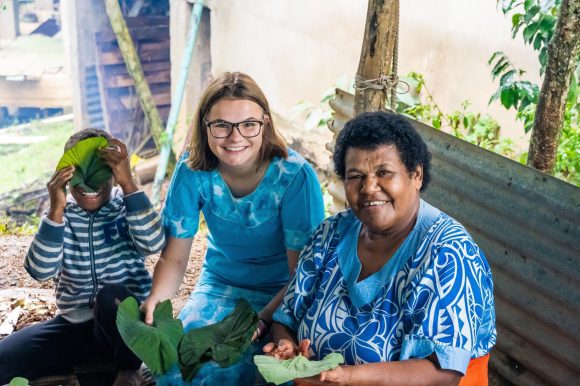
SDG 2 – Zero Hunger
The UN SDG 2 states that ‘With more than a quarter of a billion people potentially at the brink of starvation, swift action needs to be taken to provide food and humanitarian relief to the most at-risk regions.
SDG 3 – Global Health & Well Being
The UN SDG 3 states that ‘Ensuring healthy lives and promoting well-being at all ages is essential to sustainable development’.
SDG 6 – Water & Sanitation
The UN SDG 6 states that ‘Safe and affordable drinking water for all by 2030 requires we invest in adequate infrastructure, provide sanitation facilities, and encourage hygiene. Protecting and restoring water-related ecosystems is essential.’
To understand more about each of these goals, including statistics and sub-goals, have a read of this PDF.
The Fiji National Development Plan was launched by the Fiji Government in November 2017 with the vision of ‘Transforming Fiji’, and provided a framework for ‘all Fijians to realise our full potential as a nation’.
The plan included 2 key strategies for development, including Inclusive Socio-Economic Development, and Transformational Strategic Thrusts.
100% Access to Clean & Safe Water
- Every Fijian has a right to clean and safe water in adequate quantities. For the Urban areas, 100 percent access to clean and safe water will be realised by 2021, and for the rural and maritime areas by 2030.
High-Quality Healthcare System
- In the next 20 years, medical services will be raised to international standards with a major focus on tertiary health care and overall medical service delivery.
Food & Nutrition Security
- Food and nutrition security will be improved by ensuring increased local production, raising farm efficiency and productivity, and developing more effective distribution systems.
Under the FNDP, development has been made more ‘people centred’, with provision of better healthcare, education, water and electricity, and social safety nets to ensure higher living standards’.
Goal: Clean and safe water in adequate quantities and adequate sanitation for every Fijian household
To achieve this goal, the FNDP highlights a number of key policies, including:
- Strengthen water policy planning and sustainable resource management.
- Expanding access and work towards ensuring equity in the provision of water and sanitation services to all Fijians
- Ensuring long term sustainability in the provision of freshwater resources and catchment security.
Goal: Every Fijian has access to adequate food of acceptable quality and nutritional values
To achieve this goal, the FNDP highlights a number of key policies, including:
- Develop a national food and nutrition security policy and framework.
- Raise more awareness on the importance of food and nutrition security.
- Encourage the better implementation of food and nutrition security priorities in agriculture and fisheries and other sectors.
Goal: Access to quality healthcare facilities necessary to good health, and to health care services, including reproductive health care.
To achieve this goal, the FNDP highlights a number of key policies, including:
- Promote population health and reduce premature morbidity and mortality due to NCD’s as part of a whole-of-society approach to wellness and well-being.
- Provide high quality and comprehensive maternal, infant, child and adolescent health family planning and sexual education, equal parenting programmes to the population.
- Improve and integrate services targeting communicable diseases, environmental health, and emergency preparedness, response and climate change resilience.
- Expand primary health care, with an emphasis on providing a continuum of care and improved service quality and safety.
- Improve Health Management.
The Fiji Ministry of Health & Medical Services has the vision for ‘A healthy population’, and a mission to ‘empower people to take ownership of their health. To assist people to achieve their full health potential by providing quality preventative, curative and rehabilitative services through a caring sustainable health care system.’
To understand more about the Ministry of Health’s initiatives, including its Wellness Approach, take a read of the PDF.
There are a number of Non-Government Organisations and Charities in Fiji that support health promotion and prevention, with the Ministry of Health & Medical Services itself acknowledging on its website that they ‘acknowledge the tireless efforts of the many hardworking health Non-Government Organisations (NGOs) in Fiji. Their efforts to support the people of Fiji have created real and positive impact in the path towards better health for all Fijians’.
WHO has exerted a strong influence on health (education) promotion since the Alma-Ata declaration in 1978, urging member states to have a balanced approach to health care with more emphasis on primary health care and public health and less on tertiary hospital clinical care. In 1994, the WHO Regional Office for the Western Pacific produced a policy document, New Horizons in Health, which encouraged all Member States, including those in the Pacific, to take a comprehensive lifespan approach to the promotion of health.
In March 1995, the Pacific began a journey towards the attainment of “Healthy Islands” through a ministerial conference on health on Yanuca Island, Fiji. The meeting yielded the ‘Yanuca Island Declaration on Health in the Pacific in the Twenty-first Century’, as a ”unifying theme for health promotion and protection in the island nations of the Pacific”. This vision depicts the Pacific islands as a place where children are nurtured in body and mind; environments invite learning and leisure; people work and age with dignity; ecological balance is a source of pride and the ocean, which sustains us, is protected.
After the meeting on Yanuca Island in 1995, follow-up meetings of ministers of health for PICs were held in Rarotonga, Cook Islands, in 1997 where ministers adopted the Rarotonga Agreement: ‘Towards Healthy Islands’. This stated, ”the Healthy Islands concept involves continuously identifying and resolving priority issues related to health, development and wellbeing by advocating, facilitating and enabling these issues to be addressed in partnerships among communities, organizations and agencies at local, national and regional levels”.
The Rarotonga Agreement goes on to state that implementation of the concept considers the following 16 elements: adequate water supply and sanitation facilities, nutrition, food safety and food security, waste management, housing, human resources development, communicable and non-communicable disease (NCD) prevention and control, lifestyle and quality of life issues, reproductive and family health, promotion of primary health care, social and emotional well-being, population issues, ecological sustainability, information management and tobacco.
In Fiji, the Healthy Islands initiative is overseen by the Wellness Unit under the Ministry of Health and Medical Services.
The Health Island project is an extension of the Healthy City movement that is being carried out in other countries.
There are seven target settings within the project. Settings are defined as places where people live, work, learn, play and socialise. The seven settings within the approach are villages and towns, schools, churches or faith-based organisations, workplaces, and sports.
Non communicable disease (NCD) in Fiji is the number one killer. In order to address NCDs, the programme focuses on young people in schools to achieve prevention and protection. The seven action areas include financial, political, economical, physical, social, mental, and spiritual well-being.
In order for the programme to work, it must be hollistic. It looks at lifestyle and living conditions suimultaneously, rather than binarising physical, mental, social, economic, and spiritual factors. Addressing preventative factors aims to reduce dependency on medication.
Policy is also a central part of this to ensure success at a national, regional, and local level, not just in Fiji but also within the Pacific. This could include banning smoking in some areas for example.
The Healthy Islands approach uses a seven-step process, also known as the 7-D process/Steps.

The framework of the Bure recognises the importance of the leaders being empowered through integrated systems, with effective communication strategies and capacity building in all settings, to harvest wellness.
Here's an overview of some of the key models involved in the TAHF programme.
One of the frameworks mentioned in the TAHF Models PDF is the 7D Process.
Think Pacific are helping to create healthy islands through use of the 7D process/Steps.
- D1. Discovery = situation analysis. This provides a good understanding of the community, physically, mentally, socially, economically, politically, and spiritually.
- D2. Discussion = discuss with communities, so that each member has a good understanding about their community and the programme.
- D3. Dream = Vision. Enables short term and long term questions to be asked. E.g. where do you want to be in the next 3 and/or 5 years?
- D4. Directing = The issues identified in D1 can be addressed. Objectives can then be mapped against prioritised issues.
- D5. Design = Objectives identified in D4 can be included within an action plan.
- D6. Delivery = implementation
- D7. Driving = monitoring and evaluation (M&E). Think Pacific plays a key role in this stage.
These processes help to build capacity and sustainability in the long term within communities.
The First 20 Years of the Journey Towards the Vision of Healthy Islands in the Pacific (WHO).
Module 2: The Fijian Context

We know people are living longer in Fiji: average life expectancy in Fiji rose from 65.5 years in 1990 to 70.4 years in 2017. However, we have a young population: 54 percent of people in 2017 were under 30 years old. 14.3 percent of people experience disabilities. The population is also rapidly becoming more urban, especially in the Greater Suva area, increasing demand for services.
NCDs have been responsible for over 70 percent of premature deaths for a decade, with the most recent estimate being 78 percent. The majority of these deaths were recorded in groups aged between 45 and 59 years. Cardiovascular diseases, cancers, diabetes and chronic respiratory diseases are the main contributors to the deaths and are often linked to other health problems. Breast cancer and cervical cancer are the leading cancers of women and girls in Fiji.
Rates of violence against women and girls are high across the country. The NDP includes a commitment to address physical and sexual violence against women and children. Mental health is an area where additional support is needed throughout the health system for children, adolescents and adults. As an indication of the burden, suicide rates in adults increased from 29 people in 2015 to 61 people in 2017 across all age groups.
There has been an improvement in combatting tobacco use, where the percentage of adults who smoke tobacco daily decreased from 17.5 percent to 16.6 percent.
Improved systematic screening of NCDs is being piloted. Rheumatic heart disease screening is conducted during school health team visits. Evidence from school visits shows an increasing trend in obesity in our younger generations.

There is a renewed emphasis on decreasing communicable diseases (CDs), in particular, dengue, typhoid and leptospirosis. Fiji has made significant improvements in the capability of its health systems to deal with infectious diseases, and also with community health promotion and messaging on CDs.
Acute respiratory infections are reported as the most common CDs through the National Notifiable Disease Surveillance System. Tuberculosis cases have risen steadily over the past 20 years, apart from 2016, when Cyclone Winston disrupted services and the number of cases reported fell. From 2010 to 2016 there were 50-70 new cases of HIV per year. As of February 2017, Fiji had a cumulative total of 747 confirmed HIV cases.
Major outbreaks in recent years have included dengue in 2013-14 and meningococcal C, which was new to Fiji in 2018. A measles outbreak was declared in November 2019, there were 28 cases in total and all cases were from the Central Division. The aim was to vaccinate at least 95% of people in the target group and more than 300,000 people in the target group were immunised against measles.
Some 87 percent of the population have access to ‘improved sanitation facilities’. The data have not been updated for several years and expansion of peri-urban areas may not show up in countrywide access figures. Rural communities do not have adequate access to water and sanitation facilities, which require targeted interventions.
Rapid urbanisation is leading to increased demand for services, especially in the Greater Suva area. Of particular concern from the perspective of environmental risks and human rights are urban sprawl, inadequate sewage collection and treatment infrastructure, and poor solid waste management.
Inadequate sanitation facilities and poor waste management threaten human and ecosystem health by contaminating soil, food, air, fresh water and the ocean. There are roughly 200 informal settlements in Fiji, home to around 15 per cent of the population.

Reproductive health care is enshrined in the Fiji Constitution and the Reproductive Health Policy for Fiji. Antenatal care visits are high, but rates of exclusive breastfeeding have remained relatively static in recent years.
Fiji closely monitors maternal, infant and under-five mortality rates to ensure they remain low. These rates have nearly halved since 1992 and have stayed at similar levels for the past eight years. With sexually transmitted infections (STIs) rising by 33 per cent between 2013 and 2017,37 focusing on sexual and reproductive health continues to be important.
Currently in Fiji, 87 percent of all deliveries occur in six facilities: Colonial War Memorial (CWM), Lautoka, Labasa, Nadi, Sigatoka hospitals and Nausori Maternity Unit.38 Maternal admissions make up between a quarter and a third of all hospitalisations. Fiji has a Strengthening Maternal Services at Sub Divisional Facilities Plan in place, bringing quality maternal health services closer to the community by implementing a plan for safe decentralisation of maternity care to subdivisional hospitals.
Vaccination rates have remained high, but below expected targets: the NDP target for 2017-18 was 90 percent, with the final 2021 target being 95 percent.
The Fiji Adolescent Health Situational Analysis states Fijian adolescents experience an excess burden of poor health, which has not improved substantially over time. CDs, under- and over-nutrition, and poor sexual and reproductive health are common health needs for Fijian adolescents. Violence and unintentional injuries are important causes of preventable morbidity and mortality, particularly for males. There is also a very large burden of NCDs, including chronic physical illnesses and mental disorders. Health risk behaviours, including substance abuse, physical inactivity and sexual health risk, were found to be common. These outcomes and risks relate to the disadvantage that many Fijian adolescents experience across the social determinants of health.

The risk of climate shocks and environmental disasters is very evident in Fiji. In February 2016, Cyclone Winston – a category 5 cyclone and the most devastating tropical cyclone on record in the southern hemisphere – affected more than 350,000 people in Fiji (40 percent of the population). Smaller, more frequent events also affect specific populations.
Since then, Fiji has continued to prepare for climate-related emergencies locally and regionally, including through Fiji’s Emergency Medical Assistance Team (FEMAT), which is the first team in the Pacific Islands to be certified by WHO for international deployment.
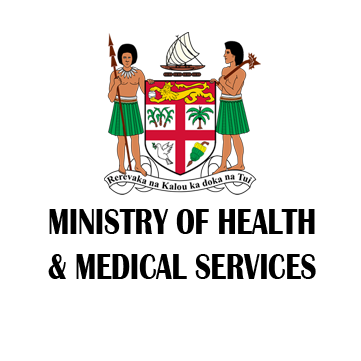
Discover some of Fiji’s biggest health problems in numbers, from NCD to cardiovascular and respiratory diseases.
The National Wellness Policy for Fiji is a national level multi-sectorial policy which ensures that groups outside the Ministry of Health and Medical Services (MOHMS) can advocate and protect Fijian health and wellness. This ensures that Wellness delivery may live up to the Healthy Islands vision from 1995.
The school is one of the 7 settings under the Fiji Wellness model, and a key setting in the development of health in young people. The health-promoting schools concept is a global school health initiative which offers a holistic approach to addressing all of the factors that influence the health of young people. It involves students, teachers and other members of the school community, parents and the wider community. It provides for coordinated action with respect to the curriculum, the school’s physical and social environments, school health services and of course those policies and practices of the school which impact on health.
‘Healh promotion is a journey, not a destination’ – Manasa
Background information, school health policies and school engagement.
Module 3: Barriers for Health Promotion & Disease Prevention in Fiji

- Prejudice in health – there are 2 key types of prejudice that affects health in Fiji; prejudice towards Indo-Fijians and HIV/AIDs patients
- Public health – The Ministry of Health has an ongoing battle with assigning their limited resources to try to balance the imminent needs of the population, whilst trying to plan for longer-term health solutions and prevention strategies
- Water and sanitation – Lack of adequate water contributes to diarrheal diseases and illness, especially in children
- Nutrition – Malnutrition can lead to a variety of issues including stunted growth and micronutrient deficiencies (leading to anemia, premature death, impaired mental development, among others)
- Physical and environmental health – The combination of adverse weather and urbanisation affects pollution levels, crops and markets, affecting diet and cardiovascular disease.
- Maternal and child health – Despite both newborn and maternal mortality dropping since the 90’s, continued improvements to the health system will improve survival rates exponentially
- Immunisations – In 2010, coverage rates of vaccines were below 90% needed for effective population immunity, having huge implications for the spread of diseases such as measles
- HIV and AIDS – Although Fiji is classified as a low HIV prevalence country, available data indicates that its population is vulnerable to HIV due to various risk factors

- Demography and geography – 15% of Fiji’s population live in squatter or informal settlements which can lack basic amenities such as clean water
- Income and Human Development Scale – Poor economic growth (negative growth from 1970 to 2006) can have huge adverse effects on Fijians both emotionally and financially
- Wealth distribution – The majority of the population live under the poverty line, having huge implications for their diet and access to healthcare
- Household income/poverty – Children are disproportionately affected by poverty, with 50% of families with 2+ kids living in poverty
- Urbanisation and housing quality – The population in Fiji is continuing to grow exponentially, decreasing the amount of ‘personal space’ in living conditions and, therefore, access to water, food, sanitation and security for children.
- Food security – With Western introduction of noodles, sausages and rice, Fijian diet has become increasingly poor. Not helped by Fiji’s biggest meat provider, NZ, supplying offcuts of meats that don’t meet NZ standards.
- Government expenditure – Government expenditure per person sits at roughly US $66 per head, far too low to meet the goals of Healthy Islands.
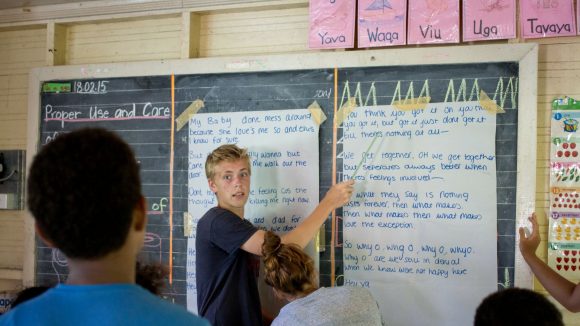
Fiji’s current education theme, “Education for change, peace and progress” is guided by documents such as the Government’s People’s Charter for Change and Progress, UNESCO’s Education for All (EFA) and the MDGs (MoE, 2008). Since independence in 1970, the education sector has made a great deal of progress. A significant milestone had been the achievement of MDG 3 ‘Achieve Universal Primary Education’ (MSPNDS, 2010). The Government, through the Ministry of Education, is steadfast in its commitment to building an educated and informed nation and continues to work closely with national, regional and bilateral partners in this process.
Some key challenges facing access to education continue:
- Pre 2013 – Inability to pay school fees (school fees now paid by the government)
- Costs of uniforms
- Costs of school supplies
- Children with disabilities – many don’t make it past primary school due to a lack of fo support or teachers specialising in working with special needs children
- Tertiary education costs

People with disabilities (PWD) in Fiji face many obstacles that prevent them from having an adequate quality of life. Though a lot has been done in this sector by both Government and non-governmental organisations, PWD lack opportunities for employment and education and often have limited access to adequate health care and support services. The lack of awareness and understanding of disability in the general community means PWD and their families face prejudice, discrimination and rejection. This is often more severe for women and girls. PWD often face extreme poverty. Disability adds to the risk of poverty and conditions of poverty increase the risk of disability.
Some key challenges facing PWD are:
- Lack of specialised services
- Lack of specialised schools/education
- Unadapted housing
Gain a deeper understanding by having a look at all of these factors in more detail in this PDF.
Module 4: The NCD Crisis in Fiji & The Pacific
Non-communicable or chronic diseases are the main cause of death and disability globally, and rates are increasing, particularly in lower-income countries. In the Pacific Islands, recent decades have seen NCDs take the lead as causes of death, and are placing substantial strains on health care services and economic developments. The non-communicable disease problem in Fiji and the region has been termed a crisis, with around 80% of deaths caused by an NCD and those numbers are growing.
Life expectancy is approximately 68 years for males and 72 years for females, which is around 10 years less than the highest level found in the region. A recent study suggests that life expectancy is static, with no gains since the late 1980s, likely due to premature deaths from NCDs. Communicable diseases are also an ongoing problem with outbreaks of typhoid and dengue occurring relatively frequently.
Urbanisation has been a growing trend in Fiji, and around half the population now lives in urban areas. This has affected the need for urban infrastructure for health and also has had considerable impacts on the health profile of rural dwellers.
The burden of NCDs continues to be a challenge for health. Although there has been a decline in the admission rate for diabetes and its complications, hypertension and cardiovascular disease, there has been a 40% increase in the mortality rate from cardiovascular disease[12]. The Global Burden of Disease study [16] in Fiji indicated that the main contributors to the burden of years of life lost (YLLs) due to premature death were ischemic heart disease, diabetes mellitus, and cerebrovascular disease in 2010. “The three risk factors that account for the most disease burden in Fiji are high body-mass index, dietary risks, and high fasting plasma glucose” (GBD factsheet).
Understand more about NCDs from Dr Waqa from the Fiji National University…
In 2010 the Ministry of Health and Medical Services launched its Non-communicable Diseases Prevention and Control National Strategic Plan 2010-2014. This strategy focused on the SNAP risk factors (smoking, nutrition, alcohol and physical activity), along with accidents and injuries.
Fiji had completed its second NCD STEPS survey (in adults) in 2011, which revealed that underlying causes and risk factors of these diseases had greatly increased from 2002 to 2011. For example:
- Increase in the percentage of those who have drunk alcohol in the last twelve months (from 21.6% to 30.6%)
- Increase in mean BMI by 1.1kg/m2
- The proportion that are overweight increased from 23.6% to 32.1% (the global burden of disease also found that this was the leading risk factor in Fiji)
- Percentage with raised blood pressure (SBP ≥ 140 and/or DBP ≥ 90 mmHg or currently on medication for raised BP) increased from 24.2% to 31%
- Percentage with raised fasting blood glucose (capillary whole blood value ≥ 6.1 mmol/L or currently on medication for raised blood glucose) rose from 19.6% to 29.6%.
Analysis of the combined risk factors of smoking, overweight, raised blood pressure, insufficient fruit and vegetable intake and insufficient physical activity were undertaken to assess the overall risk status of the population for NCDs. Overall, only 2.7% were assessed as low risk, 63.4% were assessed to be a moderate risk with 1-2 risk factors, and 34.0% high risk with 3-5 risk factors. This places most of the population at risk of developing NCDs, with over a third at high risk.

Of the 2586 survey participants, 1133 (43.8%) were males and 1453 (56.2%) females (Table 2).
iTaukei’s made up 54.7% of the surveyed population with Indo-Fijians at 42.5% and Fijians of other origins making up the remaining 2.8%.
The highest proportion of those surveyed were between the age of 35 – 54 years old (56.5%).
- Stronger commitment from all government and non-government sectors, including the private sector is needed.
- Creating health-promoting environments: Environments should be supportive of healthy lifestyles; ongoing exposure to secondhand smoke, promotion of alcohol and unhealthy foods and drinks and other issues should be tackled.
- Increasing individual responsibility and empowerment: Individuals and their families will need to take more ownership of their own health.
- This STEPS survey has highlighted the need for careful monitoring of the progress of NCDs, to enable better targeting of activities.
Fiji STEPS Report 2011
- In 2011, the pacific declared an NCD crisis. Key to addressing this is the NWCs promotion of health, communication, and behavioural. Health promotion involves enabling people to take control of their own health, and specifically enabling Fijian communities.
- The two main NCDs in Fiji are heart attacks and strokes. Dr Tukana notes that behavioural change should start from childhood, so that children are able to learn how to prevent getting these diseases themselves and in their community. Cancer and diabetes are also part of NCDs. The major contributing factors to NCDs in Fiji are obesity, tobacco, (mal)nutrition, and alcohol consumption. Subsequently, “NCDs are medical consequences of social issues”.
- Solutions need to be outside of the health sector, and there must be a collaboration between practitioners, administrators and academia to tackle NCDs. This is the important role of the Ministry of Health.
- There will be a specific focus on schools so children are able to learn about diet, physical activity, and WASH, which includes NCD and mental health. This will also be transferred into the community and villages. A Ministry of Health pilot project will be conducted in Natasiri in September.
Globally and regionally, some commitments for NCDs have been made. The World Health Organization released its ‘Global action plan for the prevention and control of NCDs for the period 2013–2020’ in 2013. This was endorsed at the 66th World Health Assembly, and included a menu of policy options for countries (member states), UN and other organizations. It also sets a global target of a relative reduction in premature mortality from NCDs by 25% by 2025, along with nine other targets. These were also discussed at a regional NCD forum, and informal agreement made that these targets were of relevance to the region and should be utilised to guide and monitor actions.
Module 5: Health in the Community
- In Fiji, there is two systems. One is curative health, which is the three major hospitals and the hospice. Public health is subdivisional hospitals, health centres and nursing stations. Public health focuses on wellness, primary prevention, and secondary prevention.
- Mental health involves counseling and behavioral change by enabling and empowering minds on how to live healthily.
- Dr Tukana highlights some of the potential challenges associated with projects tackling NCDs. These are: aiming to “translate plans into policy and action”; translating academic knowledge into a more meaningful, empowering and sustainable model for health development; contextualising nutrition, lifestyle and WASH among others; and enabling and empowering the community to take ownership of their own health.
- Rather than ‘re-inventing the wheel’, Dr Tukrana aims to work from a bottom-up approach by drawing on experience that already exists. This will involve talking to practitioners and academics internationally, and using peer knowledge. This will allow for shared learning.
- Going forward, while the Ministry of Health and the NWC have a strong knowledge of successful interventions and epidemiology, a gap exists around implementation. Dr Tukana notes that there needs to be a strong focus on translating epidemiology into action.
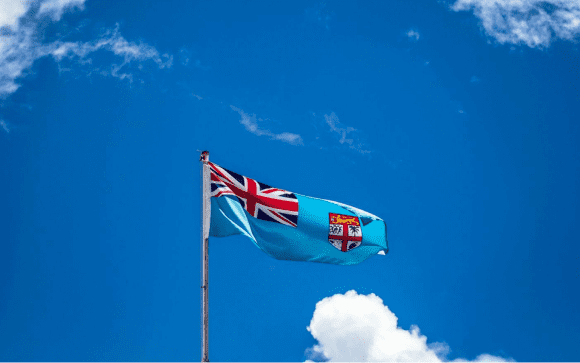
Globally a community health worker (CHW) is defined as a member of a community who is chosen by community members or organizations to provide basic health and medical care within their community and is capable of providing preventive, promotional and rehabilitation care to that community. Other terms for this type of health care provider include lay health worker, village health worker, community health aide, community health promoter, and health advisor.
Community health workers contribute to community development and can help communities improve access to basic health services. They are most effective when they are properly trained to provide information and services to the community. Community health workers are the most promising form of delivering health services to resource-constrained areas. They are seen as secondary health services in most low-income countries are available as a service to the community.
In Fiji, In Fiji, a Community Health Worker, or CHW, is someone who:
- Volunteers in their community to promote health and wellness.
- Works with people and groups to create a healthy community.
- Promotes health and wellness, particularly for maternal and child health.
- Focuses on reducing ‘lifestyle’ diseases or non-communicable diseases (NCDs), such as diabetes and heart disease.

The focus of CHWs continues to be on:
- Supporting families and communities.
- Promoting access to health services, so people will seek treatment early.
- Managing existing health issues.
They can do this in many ways, such as:
- Helping to organise the community for local health planning.
- Encouraging increased use of the existing health services.
- Promoting good health practices.
- Teaching and working with the community to make a healthy place for all.
- Monitoring activities and telling people about: Practices that have improved health in their community and Major health problems in the community.
To understand more about CHW's and their communities, take a look at this PDF.

- Outpatient programmes – wellness self-screening and home visits from a nurse
- Education and awareness – community training around both mental and physical health
- Community profiling – health descriptions (mental and physical) of communities
- Community clean-ups – deliver health-related campaigns in communities
- Zone nurse and district nurse activities – deliver a number of community health programmes including education, clinics and community visits
- Health committee and emergency response programmes – oversee the development and implementation of health promotion programmes and activities in the community
The Healthy Island approach is a holistic process by looking at lifestyle and living conditions simultaneously, rather than binarising physical, mental, social, economic, and spiritual factors. Addressing preventative factors aims to reduce dependency on medication.
The Healthy Island approach firstly works with leadership in communities as the support from leadership is central to the success of health promotion. From this point, community ownership and action plans established by communities, are essential for women’s and youth’s empowerment. Ownership helps to build the capacity and sustainability of the Healthy Island approach in the long term within communities. –
Finally, adaptation of the approach is a key part of success; what works in one community or district may not work in another.
WHO defines traditional medicine as the “sum total of the knowledge, skill and practice based on the theories, beliefs and experiences indigenous with different cultures whether it’s treatable or not used in the maintenance of health as well as in the prevention diagnosis improvement or treatment of physical and mental illness.”
In Fiji, in July 2018 the Ministry of Health & Medical Services completed a draft cabinet memorandum and its aim is on the development of Fijian traditional and complementary medicine policy for Cabinet to discuss and decide on, based on the role played by such medicines.
Dr Isimeli Tukana, National Advisor for Ministry of Health and Medical Services of Fiji, talks about traditional medicine – https://www.fijitimes.com/interest-in-traditional-medicine/
To widen your understanding of traditional medicines, as well as traditional healers and ‘witchcraft and sorcery’ in Fiji, explore this document.
For a Pacific island nation, the healthcare and public health infrastructure of Fiji is highly developed; however, such development is below that of industrialized nations such as the UK. Still, Fiji is home to two medical schools, including the College of Medicine, Nursing, and Health Sciences of Fiji National University (FNU), and the University of the South Pacific; two nursing schools, one located within FNU, and an additional private nursing school; and a large number of allied health programs found within FNU, including dentistry, radiography, laboratory science, pharmacy, and public health at the undergraduate and graduate levels.
The Ministry of Health (MOH) of Fiji is responsible for both medical and public health services. Fiji is serviced by a single referral and teaching hospital in the form of Colonial War Memorial Hospital in Suva, and additional divisional hospitals in the major population centres, sub-divisional hospitals serving smaller communities, and nursing stations and medical posts in remote areas. Each division of the healthcare system is also supported by an associated division of the public health system.
However, traditional medicines continue to play a prominent role for many, highlighted by the Pacific Medical Student Journal conclusion, which states that ‘In the Pacific traditional medicines hold a natural treasury. Over the generations, the people of Fiji and the other South Pacific islands have learnt to harness this great floral biodiversity available in their countries, which provide a safe and natural alternative to Western medicine.’
Module 6: The Way Forward...
Life Expectancy – The number of older people is increasing – People are living and requiring health care for longer. Average global life expectancy is 71.4 years (73.8 years for women, 69.1 years for men).8
Non-Communicable Diseases – NCD’s are a huge burden – Chronic diseases kill 41 million people each year, equivalent to 71 percent of all deaths globally.9 The burden of mental health issues is substantial, with suicide the second-leading cause of death among young people aged 15-29 years after road injury.10
Communicable Diseases – CD’s, including Epidemics – There has been an increasing emphasis on communicable diseases due to emerging infectious diseases and a predominance of viral illnesses.11
Respiratory Infections – Lower respiratory infections are the most common cause of death due to communicable diseases with around 3.0 million deaths worldwide in 2016.12 There have been outbreaks of leptospirosis, typhoid and dengue in Fiji; however, there have been geographical variations in the number of case reported.13 There is a greater risk of AMR, now considered a ‘global health crisis’.14 In our global society, public health emergencies can affect anyone, so we need to ensure a health system that can prevent, monitor, detect and respond to public health emergencies, linked with efforts to achieve UHC.15
Universal Health Coverage – Ensuring universal health coverage is fundamental – UHC is the foundation to achieving SDG 3: Ensure healthy lives and promote well-being for all at all ages.
System Approach – A systems-level approach to health is key – This is a key driver to improving health care and providing UHC. WHO’s six building blocks in health systems strengthening provide the core
Strategic Plan – 2020 – 2025 functions in improving health outcomes: service delivery; health workforce; information; medical products, vaccines and technologies; financing; and leadership/governance. This includes using technology and innovation for improving health outcomes.
Health Workforce – There is a renewed emphasis on the health workforce – This relates in particular to empowering nurses. WHO has designated 2020 as the Year of the Nurse and Midwife. There are around 24 million nurses worldwide, accounting for about half the global professional health workforce.
Climate Crisis – The climate crisis is affecting health – It will continue to affect the social and environmental determinants of health: clean air, safe drinking water, sufficient food and secure shelter. Globally, the number of weather-related natural disasters has more than tripled since the 1960s.
Gender & Disability Gaps – Gender and disability gaps negatively affect individuals – Gaps include negative cultural and social practices, and gender-based violence. To rectify this situation, the well-being of women, children, adolescents and people living with disabilities is at the centre of health care and achieving the SDGs.
The Ministry of Health and Medical Services of the Republic of Fiji acknowledges that it is the fundamental right of every citizen of the nation, irrespective of ethnicity, gender, creed, or socioeconomic status to have access to a national health system providing quality health care which is accessible, affordable, efficient and enables strengthened partnership with communities to improve their health and the quality of life.
The Ministry of Health and Medical Services (MHMS) is responsible for managing Fiji’s overall health care system. They aim to provide a one-system approach to the three core Strategic Priorities. They want to achieve universal health coverage (UHC) by providing the quality health care necessary for good health. Through an integrated approach to public health and by strengthening the continuum of care for patients, they will improve the health and well-being of all Fijians and combat the social determinants that affect people’s lives, especially the lives of the most vulnerable and marginalised.

The World Health Organization estimates that in the year 2020, two-thirds of all diseases worldwide will be the result of lifestyle choices. Lifestyle medicine has become a component of clinical medicine, and includes a series of scientifically proven interventions to promote the implementation of healthy lifestyles. The essence of lifestyle medicine is a focus on intervention in the cause of disease, and not on the disease itself, and in treatment of the source, both to prevent the appearance of disease and to partially or fully improve its symptoms.
(Image on left taken from the American College of Lifestyle Medicine)
As far a practicable, and subject to available resources, those responsible for implementing this Act must aim to –
- Promote and treat mental health and prevent mental disorders in Fiji;
- Provide access to basic mental health care for all who need it;
- Provide for the making of mental health assessments and diagnoses in accordance with internationally accepted principles;
- Provide the least restrictive type of mental health care that is practicable in the circumstances of a given case;
- Promote and provide access to mental health care in the community;
- Promote the right of self-determination by those with a mental disorder;
- Ensure the availability of complaint procedures and a periodic review mechanism;
- Promote the appointment of qualified decision-makers on mental health issues;
- Ensure the wellbeing, safety and adequate working conditions, welfare, support, capabilities and efficiency of all persons providing any mental health services; and
- Ensure respect for the rule of law and for human rights in regard to mental health issues.
The objectives of this Act are –
- To provide for the care, treatment, management, rehabilitation and protection of people with mental illness and other mental disorders;
- To regulate mental health care, treatment and rehabilitation services in a manner that makes mental health care, treatment and rehabilitation services available to the population equitably, efficiently and in the best interest of mental health care users within the limits of the available resources;
- To coordinate access to mental health care, treatment and rehabilitation services by various categories of mental health care users;
- To integrate the provision of mental health care services in the general and wider human services environment in the cultural context of Fiji;
- To promote the rehabilitation of persons with mental disorders and their integration into the community at the earliest appropriate time;
- To facilitate the development of community mental health services including the establishment if respite and half-way homes, residential facilities and group homes;
- To clarify the rights and obligations of mental health care users and the obligations of mental health care providers; and
- To regulate the manner in which the property of persons with mental disorders may be dealt.
The National Wellness Policy for Fiji is a national level multi-sectorial policy which ensures that groups outside the Ministry of Health and Medical Services (MOHMS) can advocate and protect Fijian health and wellness. This ensures that Wellness delivery may live up to the Healthy Islands vision from 1995, through a new concept of an individual‟s dimensions of Wellness:
- Social Wellness, where Fijians maintain a positive, productive community,
- Spiritual Wellness is the ability to establish peace and harmony in our lives, with the ability to develop congruency between values and actions.
- Environmental Wellness, that Fijians recognise the contribution of their environment towards health,
- Occupational Wellness, as Fijians gain satisfaction in their working life,
- Psychological Wellness, the ability to understand ourselves and open our minds to new ideas and experiences that can help us cope with the challenges life can bring,
- Physical Wellness, maintaining a state of biological good health and freedom from diseases, and
- Financial Wellness, having the ability to access resources readily, to maintain smooth running of daily activities.
More Information – National Wellness Policy for Fiji 2015
A number of Non-Government organisations, local charities and public figures support and advocate for the further development of mental health awareness and suicide prevention support in Fiji.
Youth Champs for Mental Health (YC4MH) is a volunteer youth-based organisation that designs and delivers awareness raising, education and advocacy campaigns to improve the conditions facing survivors of mental illness, and raise awareness on youth suicide.
The work of Lifeline Fiji entails provision of a 24/7 toll-free crisis Helpline, Community-based Crisis Support (Psychological First Aid), Promoting emotional well being to the public and Building resilience for Fijian Communities. The modes for our service delivery include phone, text messaging, online, face to face counselling and outreach. Lifeline Fiji is a volunteer-based organisation.

